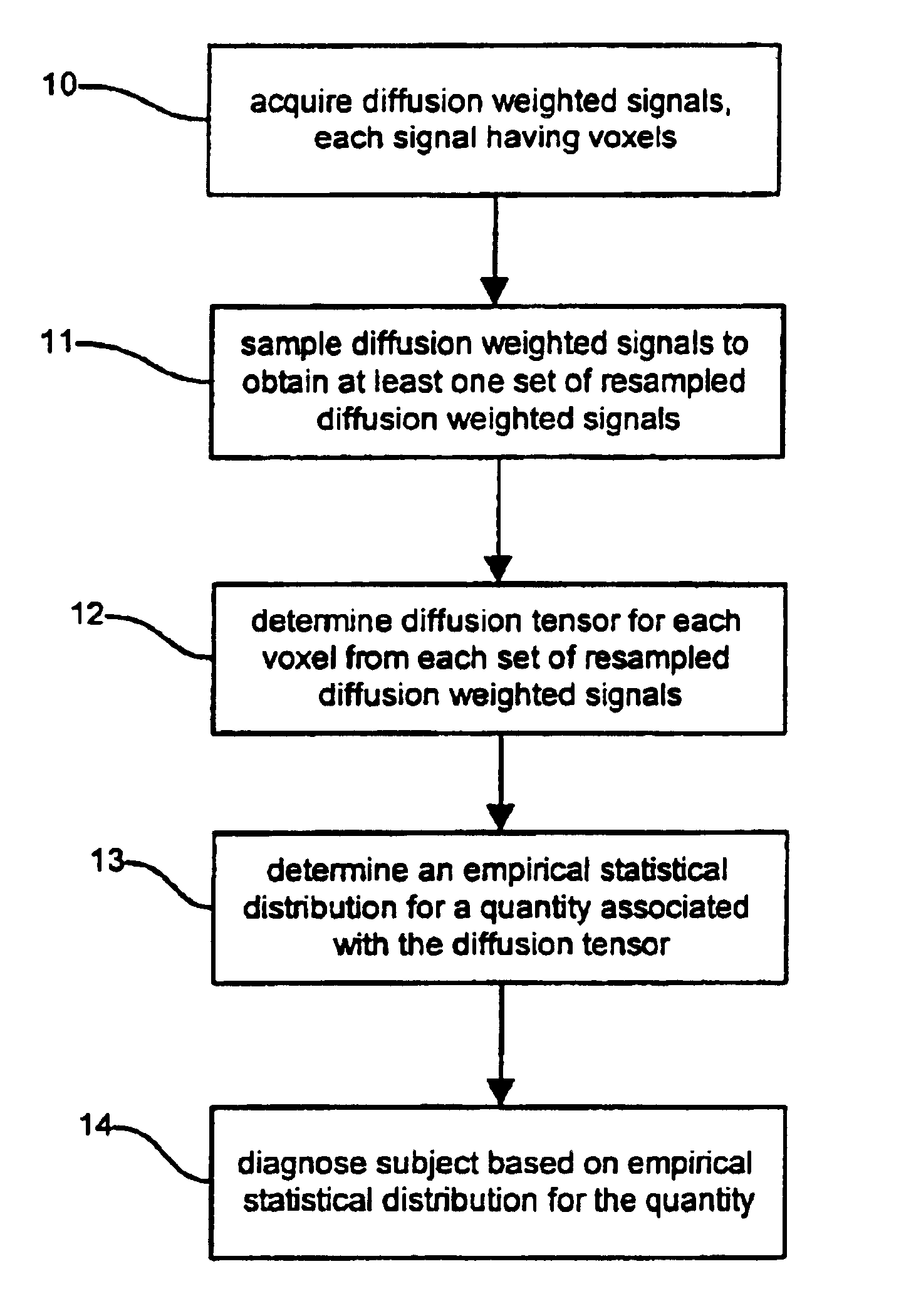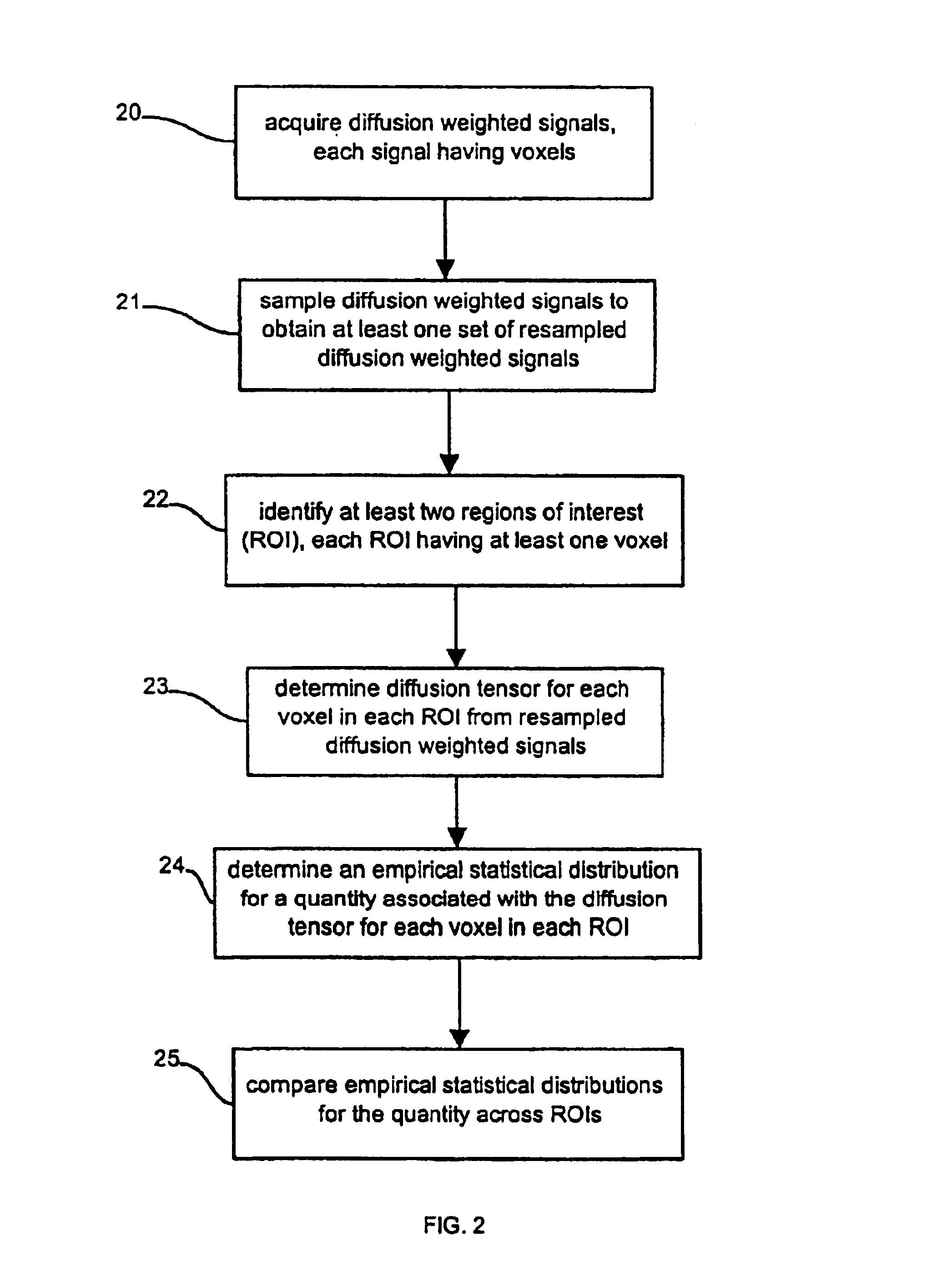Determination of an empirical statistical distribution of the diffusion tensor in MRI
a diffusion tensor and statistical distribution technology, applied in the field of analyzing dtmr signals, can solve the problems of noisy d measurement, inability to quantitatively establish whether observed changes or variations in d were statistically significant, etc., to improve studies, reduce the cost and time required, and reduce patient numbers
- Summary
- Abstract
- Description
- Claims
- Application Information
AI Technical Summary
Benefits of technology
Problems solved by technology
Method used
Image
Examples
Embodiment Construction
Table of Contents
1. Analyzing DT-MR Signals2. Parametric Description of Noise in Diffusion Tensor MRI2.1 Introduction2.2 Methods2.3 Results and Discussion3. Non-Parameteric Statistical Analysis of Diffusion Tensor MRI Data Using the Bootstrap Method3.1 Introduction3.2 Methods3.3 Results and Discussion4. Bootstrap Analysis of DT-MRI Data4.1 Introduction4.2 Methods4.3 Results and Discussion5. Quantitative Statistical Tests for Assessing Changes in the Trace of the Diffusion Tensor: Clinical and Biological Implications5.1 Introduction5.2 Methods5.3 Results and Discussion6. Quantitative Tests for the Variability of the Trace of the Apparent Diffusion Tensor of Water: Clinical and Biological Implications6.1 Introduction6.2 Methods6.3 Results and Discussion
1. Analyzing DT-MR Signals
FIG. 1 illustrates a flow diagram for analyzing DT-MR signals. Further details of the flow diagram in FIG. 1 are discussed below in the following sections.
In block 10, diffusion weighted signals are acquired, a...
PUM
 Login to View More
Login to View More Abstract
Description
Claims
Application Information
 Login to View More
Login to View More - R&D
- Intellectual Property
- Life Sciences
- Materials
- Tech Scout
- Unparalleled Data Quality
- Higher Quality Content
- 60% Fewer Hallucinations
Browse by: Latest US Patents, China's latest patents, Technical Efficacy Thesaurus, Application Domain, Technology Topic, Popular Technical Reports.
© 2025 PatSnap. All rights reserved.Legal|Privacy policy|Modern Slavery Act Transparency Statement|Sitemap|About US| Contact US: help@patsnap.com



